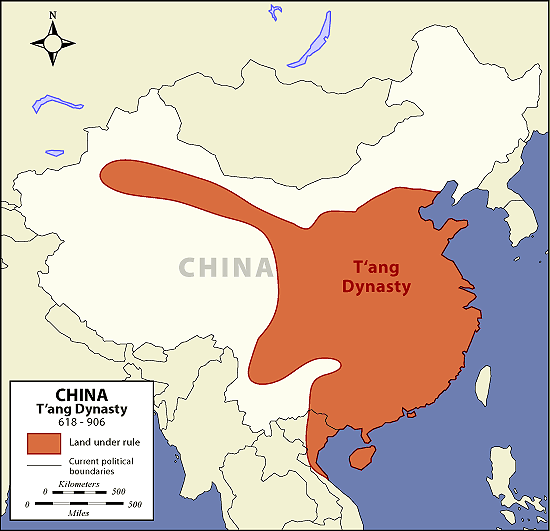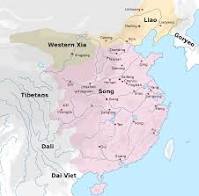AP World History Unit 1 - Lesson 1.1
Developments in East Asia
Government Developments of the Song Dynasty
 |  |
|---|
- Song Dynasty - 960 to 1279
- Tang Dynasty - 618 to 907
- China’s strength credited to it’s imperial bureaucracy, used vast organization of appointed officials to carry out the empire’s policies. The bureaucracy was a meritocracy, meaning officials were appointed based on their tested abilities.
- Civil Service Exam: exams based on Confucian texts, scoring well on them lead to opportunities in highly desired positions in the bureaucracy.
Economic and Technological Developments in Post Classical China
- The Tang Dynasty’s economy flourished with improvements in agriculture, transpiration, foreign trade, and technology. Set up further success for the Song Dynasty.
- Grand Canal - internal waterway transportation, extended over 30,000 miles, allowed the Song Dynasty to become world’s most populated trading area.
- Song Dynasty created the first guns, overtime the technology spread across Eurasia via the Silk Roads.
- Champa Rice - Originating from the Champa Kingdom (modern day Vietnam), a drought resistant and fast ripening rice, expanded agriculture of China (farming all year long available).
- Agricultural developments such as new plows and manure, increased Song China’s population to 40% of the world population.
- China’s discovery of coal in the 4th century enabled great amounts of cast iron goods and later steel to reinforce structures and agricultural equipment.
- Proto-Industrialization - Society shift away was agricultural economy, but not yet reached an industrial economy. The era relied more on home/community based production from artisans (skilled trader or craftsman) who made silk and porcelain.
- The compass for maritime navigation and navigation charts improved exploration.
- Rather than requiring labor, the Song Dynasty paid workers for public projects.
- The government used a tributary system originating in the Han Dynasty (206 B.C.–220 A.D.), where states would have to provide goods or money to honor the Chinese Emperor.
- Kowtow - ritual where anyone must bow there end in front of the emperor.
Chinese Social Structures
- At the height of the Song Dynasty, China was the most urbanized civilization in the world with cities having over 100,000 people. Main cities include Chang’an, Hangzhou, port city of Guangzhou.
- Social hierarchy from highest level to lowest: shi (scholars or gentry), nong (peasant farmers), gong (artisans and craftsmen) and shang (merchants).
- Lower classes were comprised of peasants who had to pay off debts.
- Song Government provided aid for the poor and created public free hospitals.
- Women were not treated with the level of respect men were as there were distinctive practices like foot binding (young girls had their feet tied so tightly that their bones did not grow naturally, banned in 1912) in order to restrict their public participation.
Intellectual and Cultural Developments
- Chinese invented paper in 2nd century C.E and printing in 7th century.
- Wood-block Printing - used for printing text, images, or patterns quickly.
- Most peasants were illiterate, the privileged had increased access to literature with development of printing.
- Confucian scholars consumed and produced literature quickly.
Religion in China
- Buddhism from India arrived on the Silk Roads. Widespread during the Tang Dynasty.
- Theravada Buddhism - Strongest in Southeast Asia, focused on individual spiritual growth, discipline and meditation.
- Mahayana Buddhism - Strongest in China and Korea, emphasized spiritual growth for all beings and service.
- Tibetan Buddhism - Strong in Tibet, emphasized chanting.
- Four Noble Truths - foundation of Buddhism, spread ideas of suffering in existence and how to avoid it.
- Daoism and Buddhism combined to form the syncretic faith of Zen Buddhism (emphasized direct experience and meditation)
- Neo-Confucianism - abstract ideas of Daoism and Buddhism such as incarnation emphasizing ethics of nature, popular in China’s neighboring countries.
Differences Between Japan, Vietnam, and Korea
Japan
- Promoted Buddhism and traditional Shinto
- Emulated Chinese politics, art, and literature.
- Tale of Genji - the worlds first novel.
- Practiced feudalism (similar to Europeans but power more spread out).
- Emperor had much less power than Chinese would.
Korea
- Tributary relationship to China.
- Shared culture and technological systems.
- Practiced powerful aristocracy.
- Civil service exams not open to peasants
Vietnam
- Similar technology to China.
- Political centralization nonexistent.
- Rejected practices that treated women unfairly.